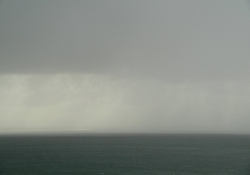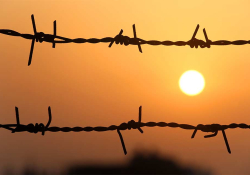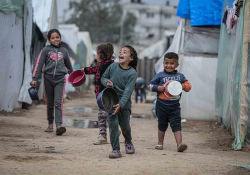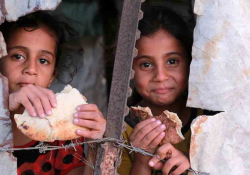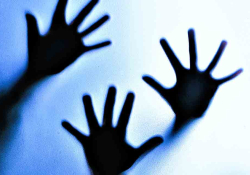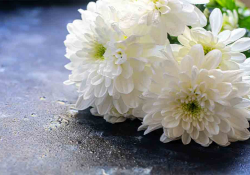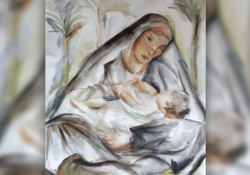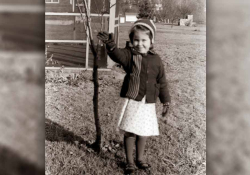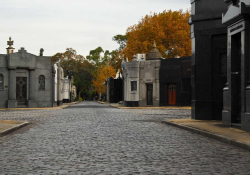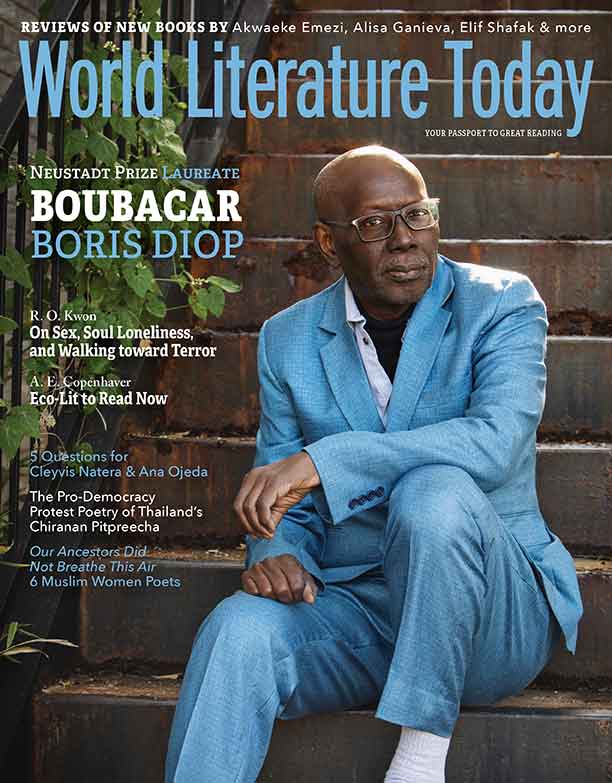Migratory Violets
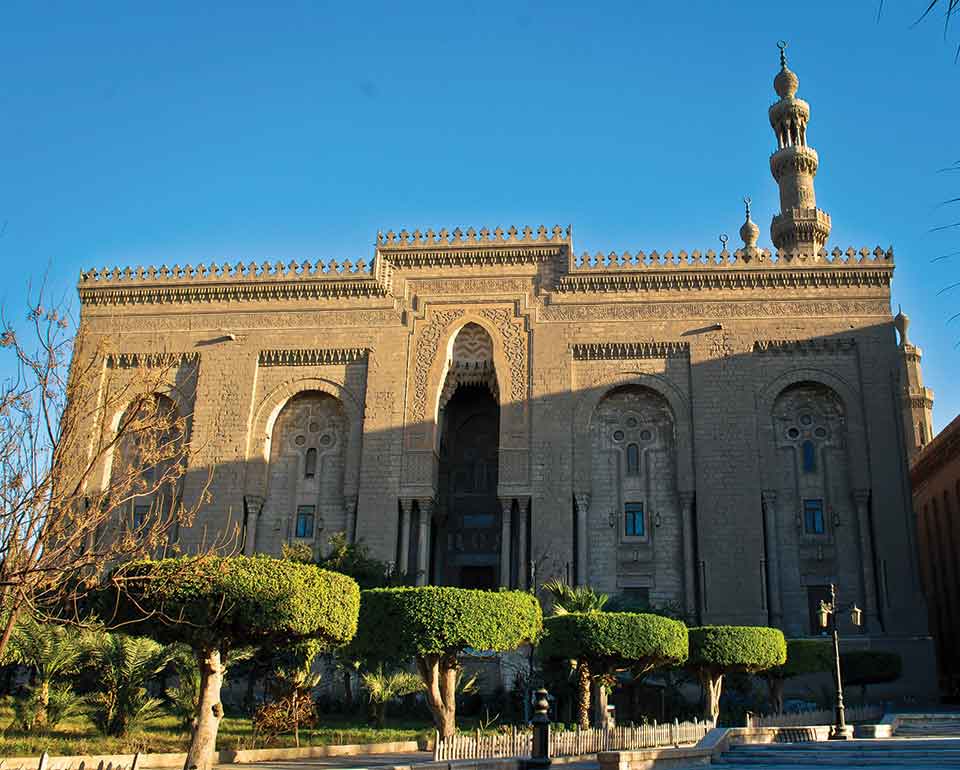
An Iranian woman living in the US seeks to understand the meaning of home on a journey to Egypt to visit the burial place of Mohammed Reza Pahlavi, the Iranian king respected for his religious tolerance but forced into exile for the same.
Can someone in exile ever find home again? Early in 2022, I asked myself that question as I flew from my adopted home in Washington, DC, to visit the tomb of the Shah of Iran, Mohammad Reza Pahlavi, who was exiled to Egypt during the Iranian Revolution. He was a man my father greatly respected because he gave religious minorities, like us, the chance to live like anyone else. The 1979 revolution would change that, forcing the Shah of Iran and many minorities into exile. When it seemed that everyone had turned their backs on him, President Anwar Sadat invited the Shah to live in Cairo. President Sadat had made it clear to Mohammad Reza that he was not a guest but that Egypt would be his home. Iranians believe that to truly understand someone, you must know their friends. So, I was on my way to Cairo.
Iranians believe that to truly understand someone, you must know their friends. So, I was on my way to Cairo.
I was five years old when the Iranian Revolution began, which would reshape the country of my birth. Despite the difficulties created for my family, my father stayed in Iran. He believed that a person who moved away from home once would never find home again. Sometimes I wonder if, staying in Iran, he was ever able to experience the kinds of happy moments I remember from before the revolution. Like the summer of 1978, when we traveled to Persepolis and Shiraz, the land of Cyrus the Great, in his cherry-red Paykan. We spent every other weekend at the beach where the tall, green Alborz Mountains met the Caspian Sea and deep blue sky. During the week, rain or shine, my dad helped my grandfather in his rice paddy while my mom, my older brother, and I walked through the fields surrounded by the smell of the rice seedlings growing in hot, humid air, picking tangy fruit from the wild pomegranate trees and sweet raspberries from the bushes. All I have of that life now in Washington, DC, is a few black-and-white photographs that I brought with me.
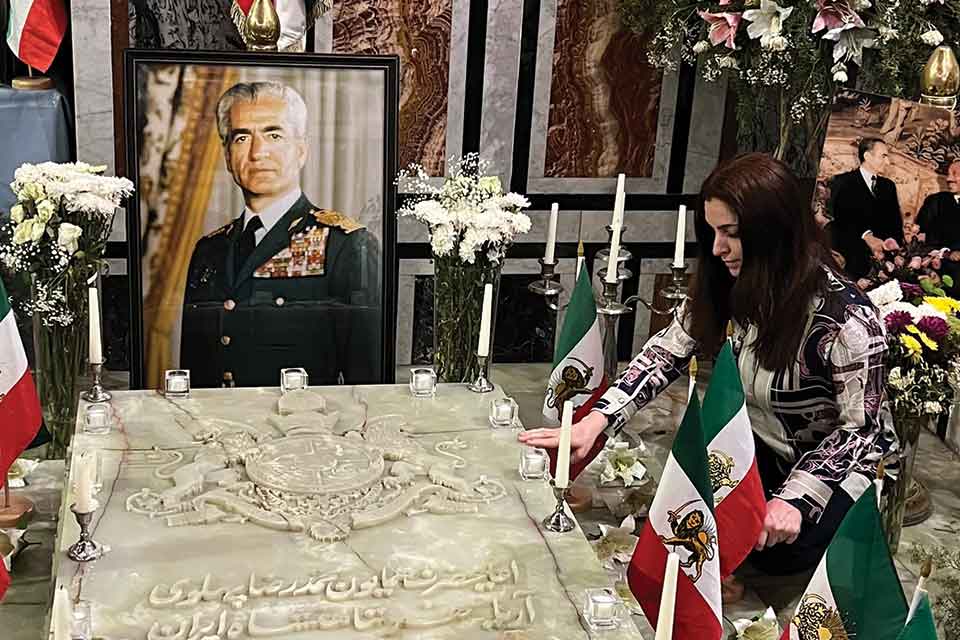
I was five years old when the Iranian Revolution began, which would reshape the country of my birth.
Because I know the dangers of a postrevolution country firsthand, I can’t deny that I was nervous about traveling in Egypt only a decade after their own uprising. It was almost 9:00 p.m. when the plane landed at Cairo International Airport. After getting through customs, I took a taxi to my hotel downtown. The driver started a conversation and asked me where I was from. When I answered, he looked at me in the rearview mirror. “But you do not look American,” he said. I knew what he meant. If I had been traveling in Europe, I would have ignored his opinion. But I knew, from my experience with revolution, that any taxi driver could be working with the government for security purposes. Now here in Egypt, it was safer to answer the question.
“I am Iranian in exile,” I said reluctantly.
“You came to visit the tomb of the Shah?” he asked, looking at me again.
“Yes,” I said.
“Welcome home, sister,” he said.
Hearing that melted my tension away. Still, I asked myself why he would welcome me home. When he saw my confusion, he continued: “When you’ve buried someone you love and respect from your country in another land, that land becomes your home.”
I was exhausted from the flight, so I avoided his gaze and looked out the window to end the conversation. The city looked dark and gloomy, and the heavy smell of vehicle exhaust filled the air. Trash cans full of garbage, half-demolished buildings, abandoned apartments, and endless advertising billboards on both sides of the streets were all signs to me of economic crisis.
An hour later, in my room, before even looking at the view, I stretched my legs out on the bed and fell asleep thinking about where to start in the morning. It was still dark when I woke up to the muezzin’s call to prayer. The dawn was slowly breaking, golden sunrays reaching the hills and tall buildings in the distance. Tahrir Square, the epicenter of political activity and demonstrations, stood alone, arrogant, under a surreal sky.
After breakfast, I enlisted the hotel concierge to help me hire a taxi for the day. In less than ten minutes a short, middle-aged man with curly hair named Ahmed came looking for me in the lobby.
I got into his car and asked him to take me to Al-Rifa’i Mosque.
“Are you going to visit the tomb of the Shah?” he asked.
“Yes,” I replied.
“You are Irani?” Ahmed asked.
“I am Irani, but in exile,” I answered.
“Welcome to Cairo, sister.” I smiled this time. Several minutes later, we got stuck in traffic.
Ahmed drove the vehicle patiently along the Nile. The modern streets, lush green alleys, and the nineteenth- and early twentieth-century palace-like buildings, bridges, fancy riverside restaurants, modern squares, towering apartment complexes, and mosques with tall minarets showed the clash between modernity and tradition, religion and secularism. Security was everywhere in the streets. The high-profile police presence, armed guards, and security barricades reminded me of Iran after the revolution, the tension and conflict very much alive in society.
As Ahmed introduced each place to me, I watched the people, the lively crowds in the spice and fruit markets, and the men selling vegetables streetside. I knew wearing hijab wasn’t compulsory in Egypt, but to my surprise, most women on the streets wore one, and the few women not wearing one still dressed modestly. Wearing hijab is required in Iran, and even the women who prefer wearing one are against compulsory hijab because they feel the obligation is divisive, creating hate. Weaving slowly through traffic, heading toward the Midan al-Qala’a Citadel, we got closer to Al-Rifa’i Mosque, and I could feel the heavy gaze of passersby. Was it because I wasn’t wearing a headscarf?
Finally, we found ourselves near the mosque, its stone walls stretched upward, the minarets standing tall against the sky, like arms lifted toward heaven. Ahmed parked the car, walked to the security cabin at the entrance, talked to the armed guards, and waved me in. After my bag was checked, we stepped inside the mosque. We climbed the wide, stony steps and removed our shoes at the entrance. A young man approached and asked us to follow him to the tomb. Entering the dim interior, I looked around with wonder, noticing the exquisitely detailed marble inlays of the dome above. We entered the prayer hall covered with rows of red silk Persian carpets. Two cats came along, playfully walking in front of us as if they knew where we were going. We passed the tombs of Farouk I, the former king of Egypt and brother of the Shah’s first wife, Princess Fawzia. Their marriage was a short one.
To my left a tall door stood half open. Ahmed and the young man waited for me to enter first. For a moment I paused and watched the cats walk inside first. I felt excitement, respect, and apprehension, all at once. I followed the cats inside. It was March 24, the fourth day of Persian New Year, and the room was full of white flowers—dahlia, marigold, lily, and roses were everywhere. A picture frame of the Shah with his friend, President Anwar Sadat, stood to the right of the Shah’s tombstone. A frame of the Shah’s family sat to the left. Quranic verses in gold calligraphy glistened across the multicolored marble walls. A raised gravestone, which looked simple amid such finery, lay in one corner beneath an imperial Iranian flag. I stood next to the tombstone. Emblazoned upon its surface was the Pahlavi family crest and a pair of lions facing each other. His Majesty Mohammad Reza Shah, Aryamehr, the King of Iran.
Here, far away from his homeland, lay a man who, in my opinion—and opinions there are many—tried his best to make Iran a safe home for all of his countrymen and countrywomen, despite their religion or belief. I bowed before the Iranian flag, feeling a lump in my throat and my hands shaking. I kneeled next to the Shah’s tombstone, wishing I had some time alone to pray for his soul. As if Ahmed, the young man, and even the cats read my mind, they all left the room. I closed my eyes and recited a prayer: “O Lord, a noble soul hath ascended unto your kingdom and hastened from the mortal world of dust to the realm of everlasting glory. He is a guest recently arrived, treat him as one of Thy dear ones.”
I sat there with my eyes closed, and I wondered what if the revolution had never happened. What if the Shah hadn’t been forced to leave his homeland? I thought about my family that were now living all around the world, separated from one other. I thought about my unfulfilled dreams and the challenges I went through as a member of a religious minority whose citizenship was nearly taken away with the exile of the Shah. I could have stayed there for hours kneeling next to the tombstone, eyes closed, but another group arrived and my solitude ended.
Leaving the tomb, I found Ahmed and the young man outside the room waiting for me. Outside the mosque we said goodbye to the young man, and I asked Ahmed to take me to Khan el-Khalili Bazaar.
Stuck in traffic again, in the distance I saw the minarets of Al-Huseyn Mosque. I asked Ahmed to pull over. I decided to walk. I stepped out onto a busy street loaded with pedestrians, beggars, local small cafés, and eateries with stacks of falafel at the front. I plunged into the labyrinth of Khan el-Khalili bazaar and remembered the book by Naguib Mahfouz about this place. “Take good note of things around you. Learn streets by heart or else you’ll get completely lost,” he wrote.
I plunged into the labyrinth of Khan el-Khalili bazaar and remembered the book by Naguib Mahfouz about this place.
I looked around to remember the shops at the entrance and then walked through the narrow alleys of the neighborhood, watching the lively crowd on this hot afternoon, cooled by the artificial breeze that shopkeepers create by splashing water on the pavement, the scent of wet soil released into the air mingling with the aroma of coffee and lamb kebob. A spiderweb of countless narrow alleyways appeared to my left and to my right. Shops selling oil, perfume, gold jewelry, colored glass lamps, spices, trinkets, cheap clothing, and antiques lined the walkways. The air was filled with the sound of shopkeepers shouting to invite people in to buy from them. Women, all in hijab, bargained for discounts, children clung to their mothers’ veils to avoid getting lost, and stray cats roamed the alleyways aimlessly. I tried hard to understand what people were saying, hoping to find some use for all of those years of mandatory Arabic courses at school.
As I walked further, passages became narrower and more crowded with the men in long white dishdasha and the women in black veils, more and more often in full niqab. Even though I could only see their eyes, I could feel their heavy gaze on me. Was I in the wrong place? Is this a territory for radicals? Why were they all wearing niqab here? My fear of how Iran had become during the revolution was surfacing. There was no one without cover, no one like me in this part of the bazaar. I stood in the middle of the crowd trying to find a way to go back to the upper part of the bazaar. The crowd pushed me forward. I tried harder to find my way back, but the crowd pushed back harder. For a moment I was terrified. I felt like I was drowning. Then I stepped inside a shop. Unlike the shops in the upper part of the bazaar, nobody greeted me. I looked around to see if I could find an excuse to be there, maybe by buying something, but all I saw were black veils of various quality and the niqab in different colors. I summoned all my energy, stepped out of the shop, and forced my way against the flow. After several steps, I entered another shop. I made my way back little by little this way. Finally, I managed to get back to the middle of the bazaar where the shopkeepers happily greeted passersby, convincing them to enter their stores.
That’s when I stumbled into Naguib Mahfouz Café. The smell of hookah tobacco, the familiar singing of Umm Kulthum, waiters in their brimless tarboosh hats, and the colorful, historic designs of the walls, ceiling, and meshrabiyeh windows seduced me. This was the Arab writer’s favorite spot. I was encouraged to have an early dinner. I ordered a stuffed pigeon, and the waiter asked me in a hushed voice if I’d like to order their homemade wine.
The melancholic voice of Umm Kulthum took me back to my childhood when my father listened to her songs on his transistor radio. At that time, I thought my father knew Arabic, but now I realized he was just enjoying her voice. I sipped my wine and listened to the conversations in the language I also hardly knew, and again I thought about home. From interviews, I learned that Naguib Mahfouz believed home was where all your attempts to escape cease. The taxi driver thought home was a land where you have buried someone you love. My father believed home was his birthplace, believing so strongly that he wouldn’t risk leaving. Was the Shah truly home here, or was he a guest? I looked around. Everyone was drinking tea. That’s when I realized that, in this café, alcohol was only offered to tourists.
Now, when I retrace my way through the backstreets of the bazaar on that memorable day in March, I think of my favorite poem by the Iranian poet Mohammad Reza Shafi’i Kadkani.
Washington, DC
The Journey of Violets
by Shafi’i Kadkani
translated by Sepideh Zamani
In late March
the journey of migratory violets
is beautiful.
On a bright midday in March
when they move the violets from cold shadows,
into the spring’s gentle breeze,
and then into small wooden boxes,
with roots and soil
– their movable motherland –
to the street side.
A thousand words rush in and I whisper:
I only wish
I only wish that one day
one could carry motherland,
like the violets in their boxes of soil
wherever one pleased, whether in bright rain
whether in pure light.
Translation from the Persian


